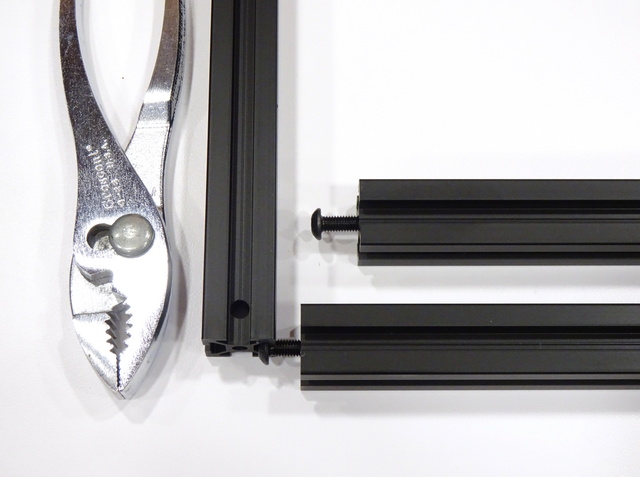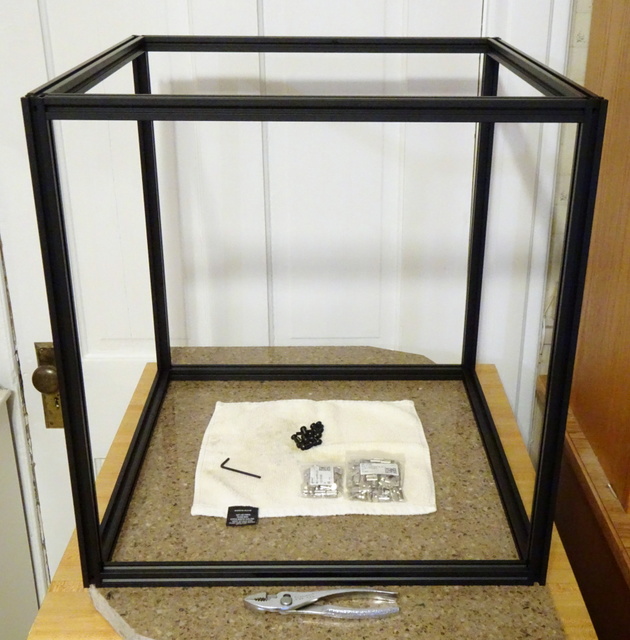I got interested in having a Voron 2.4 3D printer after seeing after seeing Tom Sanladerer’s video review of his completed build. But at the time, the full build cost about $1500 — a little high for my taste — and only a partial kit was available and you had to source some of the parts yourself — not interested — because the Voron is an open-source design, not a product. But not too much later I found a full kit from Fysetc on AliExpress for just under $1000; and after an extensive wait and repeated untruths about the status of the shipment, I have my kit and I’m started to assemble it.
Plenty of others have documented the entire build process; I’ll only share particular items I find noteworthy and different from other printers I’ve assembled.
The first is the frame joinery. I’m sure the Voron is not the first thing in the world to use the heads of M5 machine screws in the T-track, but I’d not seen it done before. You need an access hole through the aluminum for the hex key to drive the screws; but unlike joints that bolt through the aluminum, the access hole doesn’t have to be precise for you to be able to align the joint.
It ends up fairly square and fairly rigid, with the squareness aided by assembling on a discarded scrap of granite countertop.
And yes, that frame is almost as wide as my roll-away dishwasher. I got the kit with 350-mm-cube build volume, which is larger than I need; and I’d probably have picked the 300-mm-cube build volume had there been a full kit for it when I ordered. One of the Voron’s claims to fame is fast printing; and the mass of the larger gantry for the 350-mm printer can be expected to impact the top acceleration I can use without ringing.

